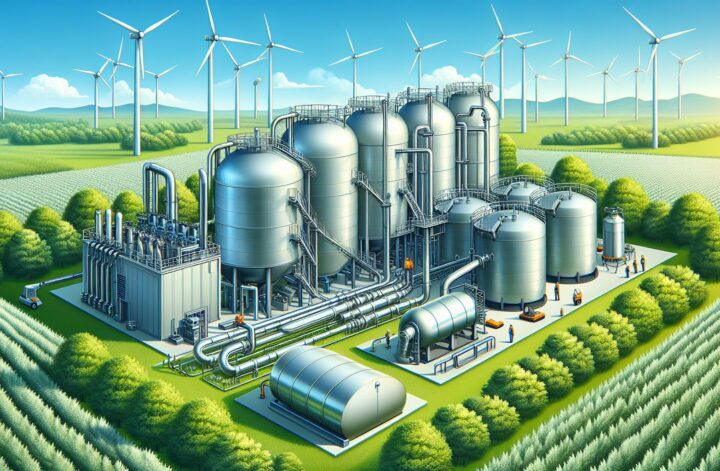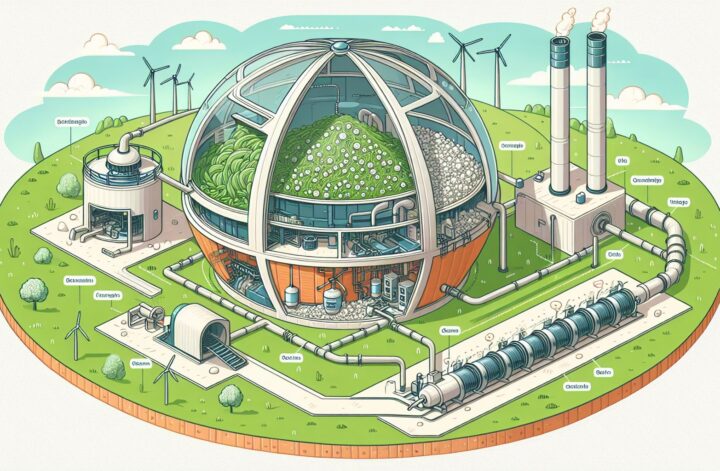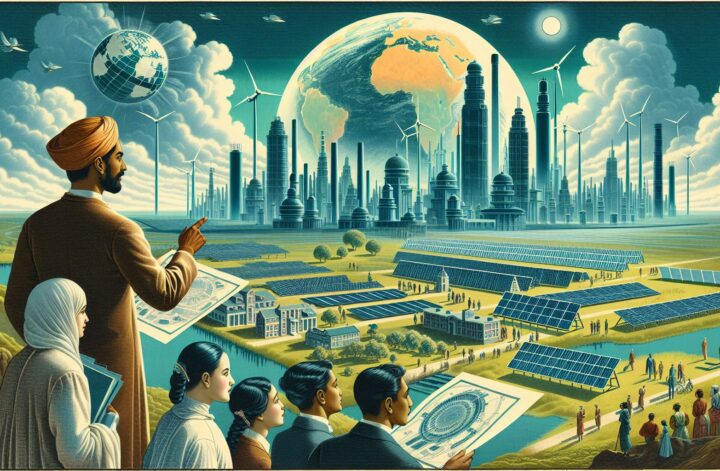Biogas Production – Unlocking the Power of Waste
There is no denying that we live in a world where waste production is growing incessantly, making waste disposal and management a matter of immense concern. However, if properly manipulated, this waste can turn into valuable resources, such as energy, through the process of anaerobic digestion for biogas production.
Biogas production may not be a well-known concept to the uninitiated, but it has served as a significant source of renewable energy worldwide for decades. By converting organic waste material into a gas comprised primarily of methane (CH4) and carbon dioxide (CO2), biogas can be used as an efficient, green fuel for heating, electricity, and even transport.
The Process Behind Biogas Production
Anaerobic digestion is the key process involved in the production of biogas. Working in the absence of oxygen, specialized microorganisms break down organic material into simpler compounds—primarily CH4 and CO2. The anaerobic process can be divided into four main stages: hydrolysis, acidogenesis, acetogenesis, and methanogenesis.
During hydrolysis, complex organic compounds are converted into simpler sugars, amino acids, and fatty acids. These replacements swiftly transform into volatile fatty acids and alcohols during the acidogenesis process. Acetogenesis follows, where the compounds are further simplified into hydrogen, carbon dioxide, and acetate. The final stage, methanogenesis, sees the conversion of these end products into methane, carbon dioxide, and water via methanogens. The result is a biogas mixture which typically contains around 60-70% methane and 30-40% carbon dioxide, with traces of other gases.
Harnessing the Power of Biogas
This generated biogas fuels combined heat and power (CHP) units, a popular mode for using biogas because of the efficient recovery of energy in the form of electricity and heat. Biogas can also be upgraded to biomethane, a process that removes impurities and carbon dioxide, increasing the methane concentration up to 95%. This biomethane is virtually identical to natural gas, allowing it to be fed directly into gas networks.
Looking Towards a Sustainable Future with Biogas
With continuous technological advancements, biogas production increasingly promises a cleaner and more sustainable energy future by recycling organic waste and, at the same time, decreasing our reliance on fossil fuels. More than just a waste management solution, biogas production represents an exceptional opportunity to advance a circular economy, facilitating enhanced energy security, and contributing significantly to climate change mitigation strategies.
Biogas production might be a relatively underrepresented sector within the broader renewable energy industry, yet its potential to facilitate sustainable development is significant. As we continue to search for solutions to handle the world’s escalating waste production and increase renewable energy sources, biogas offers a feasible, efficient, and eco-friendly path forward.
Sources
- Brown, D., Li, Y. (2013). Solid State Anaerobic Digestion for Methane Production From Organic Waste. Renewable and Sustainable Energy Reviews, Issue 15.
- Weiland, P. (2010). Biogas production: current state and perspectives. Appl. Microbiol. Biotechnol, Issue 85.
- Bond, T., Templeton, M.R. (2011). History and future of domestic biogas plants in the developing world. Energy for sustainable development, Issue 15.




